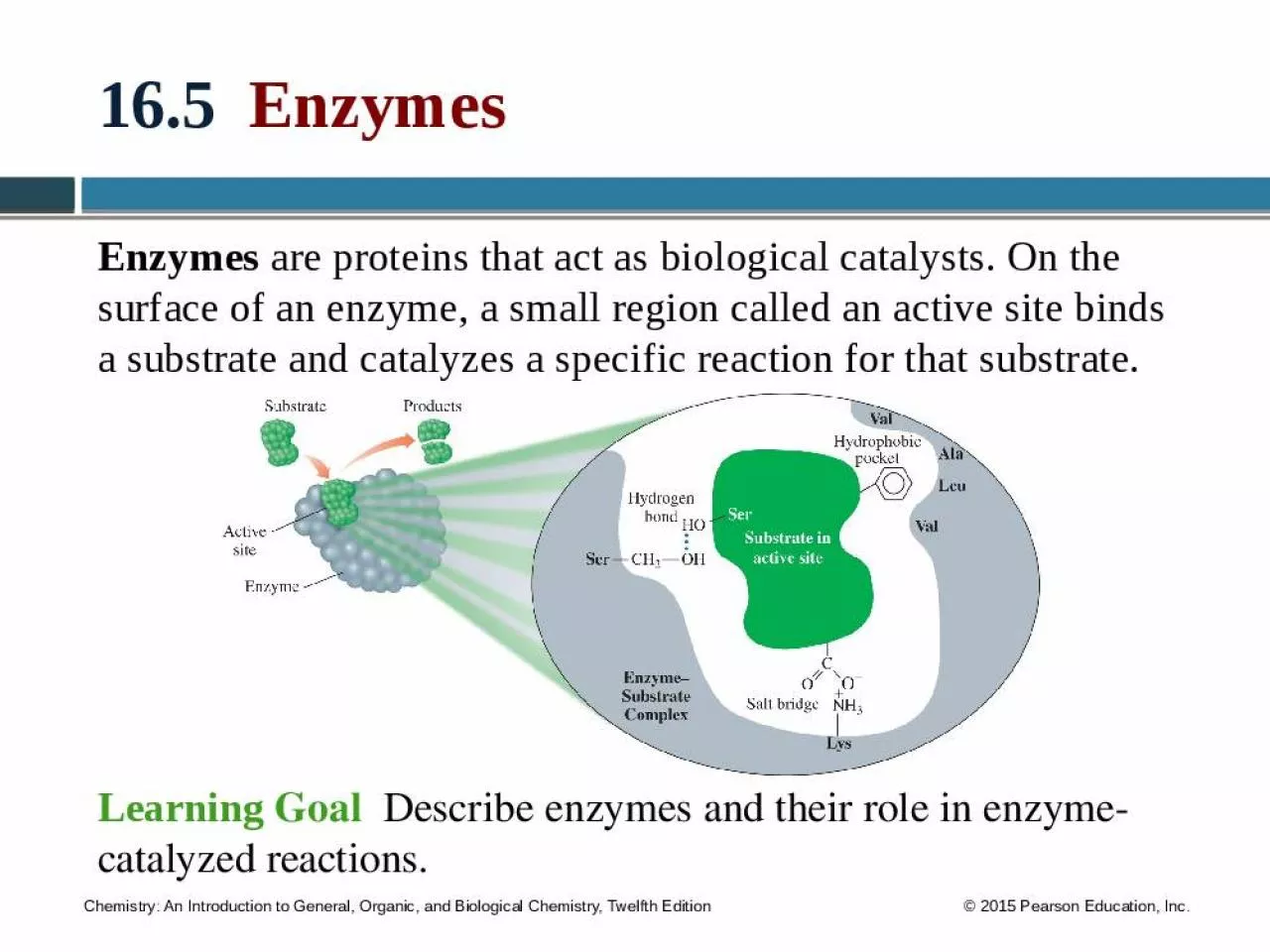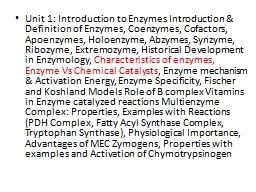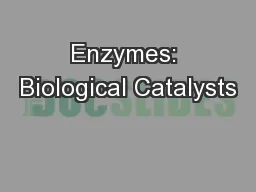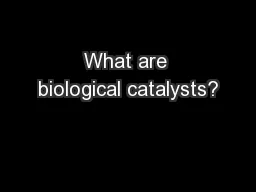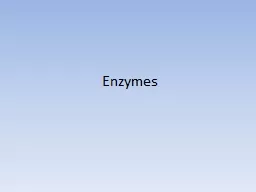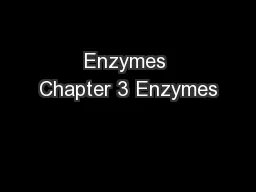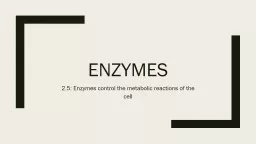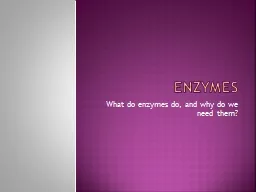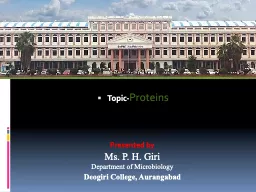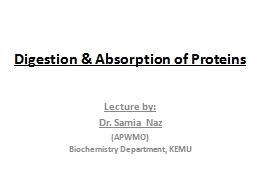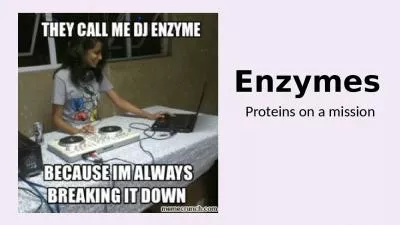PPT-16.5 Enzymes Enzymes are proteins that act as biological catalysts.
Author : duncan | Published Date : 2024-09-09
On the surface of an enzyme a small region called an active site binds a substrate and catalyzes a specific reaction for that substrate Learning Goal Describe
Presentation Embed Code
Download Presentation
Download Presentation The PPT/PDF document "16.5 Enzymes Enzymes are proteins tha..." is the property of its rightful owner. Permission is granted to download and print the materials on this website for personal, non-commercial use only, and to display it on your personal computer provided you do not modify the materials and that you retain all copyright notices contained in the materials. By downloading content from our website, you accept the terms of this agreement.
16.5 Enzymes Enzymes are proteins that act as biological catalysts.: Transcript
Download Rules Of Document
"16.5 Enzymes Enzymes are proteins that act as biological catalysts."The content belongs to its owner. You may download and print it for personal use, without modification, and keep all copyright notices. By downloading, you agree to these terms.
Related Documents

